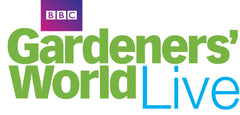The Ultimate Guide to Log Cabins for Holiday Parks & Campsites
Apr 18, 2025
How Premium Timber Lodges Can Transform Your Tourism Business

The Rising Demand for Log Cabins in UK Tourism
The UK holiday park industry is undergoing a quiet revolution, with discerning travellers increasingly turning away from traditional static caravans in favour of authentic, nature-immersed log cabin experiences. This shift isn't just about aesthetics—it's a fundamental change in what modern holidaymakers value. Families, couples, and solo travellers alike are seeking accommodations that offer both comfort and a genuine connection to the outdoors, something that mass-produced caravans simply cannot provide. The numbers speak for themselves: according to VisitBritain, bookings for premium woodland and rural retreats have surged by nearly a third since 2020, with no signs of slowing down.
For holiday park and campsite operators, this presents an unparalleled opportunity. Log cabins command significantly higher nightly rates than standard static caravans—often 30-50% more—while also extending the traditional holiday season. Where caravan parks typically see occupancy plummet after summer, timber lodges maintain strong bookings deep into autumn and even winter, thanks to their cosy, insulated designs that appeal to guests seeking festive getaways or New Year retreats. Beyond the financial benefits, log cabins also align perfectly with the growing demand for sustainable tourism.
Unlike energy-intensive brick buildings or plastic-heavy caravans, timber is a renewable, low-carbon material that resonates strongly with environmentally conscious travellers. This guide will explore every aspect of integrating log cabins into your holiday park, from initial planning and design considerations to marketing strategies that maximise occupancy and revenue.

Understanding the Commercial Advantages of Log Cabins
The decision to invest in log cabins for your holiday park should begin with a clear understanding of their commercial potential. Compared to traditional static caravans, timber lodges offer superior profitability through multiple channels. Firstly, their premium positioning allows for significantly higher nightly rates. Where a standard caravan might fetch £80-£120 per night, a well-designed log cabin can command £150-£250, particularly if it includes sought-after features like hot tubs, fire pits, or panoramic windows that frame the surrounding landscape. This price premium isn't just theoretical—parks that have made the switch consistently report revenue increases of 40% or more per unit.
Beyond nightly rates, log cabins also demonstrate stronger year-round occupancy. Static caravans typically operate on a sharply seasonal model, with 70-80% of bookings concentrated between May and September. Timber lodges, by contrast, maintain steady demand throughout the year. Their natural insulation properties make them appealing for winter breaks, while features like wood-burning stoves or underfloor heating transform them into cosy retreats during colder months. This extended season can add 10-12 weeks of operational time annually, dramatically improving your park's overall revenue potential.
Operational costs tell a similarly compelling story. While the upfront investment in a log cabin may be higher than a static caravan—typically around £65,000 compared to £45,000—the long-term economics are far more favourable. Timber structures require less maintenance than caravans, which are prone to damp, mould, and general wear-and-tear. Modern pressure-treated logs can last 25-30 years with minimal upkeep, whereas caravans often need replacing after just 10-15 years. When you factor in the higher revenue potential and longer lifespan, log cabins consistently deliver a stronger return on investment.

Designing Log Cabins That Guests Will Love
Creating a successful log cabin offering for your holiday park requires careful attention to design. Today's guests expect more than just a place to sleep—they want an experience that feels special and Instagram-worthy. The most profitable lodges balance aesthetic appeal with practical functionality, ensuring they cater to both romantic couples and families alike.
One of the most effective strategies is to offer a range of cabin types tailored to different guest demographics. Romantic retreats, typically one-bedroom designs with features like freestanding baths or private hot tubs, consistently achieve the highest nightly rates and occupancy outside of peak summer months. These cabins should prioritise privacy and luxury touches, such as king-size beds, high-end linens, and mood lighting.
For families, two and three bedroom log cabin configurations are essential. Clever design choices can make these cabins feel spacious even at modest square footages—think mezzanine sleeping areas for children, fold-out sofa beds, and multi-functional furniture. Bunk beds are particularly popular with families, as they allow more sleeping capacity without sacrificing floor space. Storage is another critical consideration; families on holiday often bring substantial luggage, so built-in wardrobes, under-bed storage, and hallway cupboards can make a cabin feel much more comfortable.
Accessibility is an often-overlooked but increasingly important factor. With an ageing population and growing awareness of inclusive travel, offering at least one wheelchair-accessible cabin can open up your park to a wider audience. Key features include wider doorways, step-free access, wet rooms instead of traditional bathrooms, and lowered kitchen worktops. These adaptations needn't compromise style—many accessible cabins are indistinguishable from standard designs apart from their practical modifications.

Real-World Success Stories from UK Holiday Parks
Nothing illustrates the potential of log cabins better than real-world examples from UK holiday parks that have made the transition. One such case is Kesters Country Lodges, a family-run park in Devon that replaced twelve aging static caravans with premium timber lodges.
The transformation was remarkable—not only did the park's average nightly rate increase by 40%, but they also successfully extended their operating season from the traditional 20 summer weeks to 32 weeks annually. Guest satisfaction scores soared, with the new cabins consistently earning 4.8 out of 5 in post-stay reviews, compared to the caravans' previous average of 3.9.
Another instructive example comes from a coastal park in North Wales that introduced six luxury beachfront log cabins alongside its existing caravan offering. Despite initial concerns about salt air corrosion, specially treated marine-grade timber has proven exceptionally durable.
These cabins now generate 60% of the park's total accommodation revenue despite representing just 20% of its units—a clear demonstration of how quality can outweigh quantity. The park's owner reports that the cabins' Instagram-friendly design, particularly their floor-to-ceiling ocean views, has driven substantial organic marketing via social media.
Operational Considerations and Marketing Strategies
Successfully integrating log cabins into your holiday park requires thoughtful operational planning. One of the most significant advantages timber lodges offer over caravans is reduced maintenance. Modern treatment processes mean today's log cabins require far less upkeep than their predecessors. An annual inspection and reapplication of protective stain every 3-5 years is typically all that's needed to keep the exterior in perfect condition. Internally, the solid construction of log walls eliminates many common caravan problems like condensation and damp.
From a marketing perspective, log cabins practically sell themselves if presented correctly. High-quality photography is essential—guests need to see those cosy interiors and picturesque outdoor spaces before they'll book. Professional shots of the cabins at different times of day and in various seasons help potential visitors imagine themselves staying there. Digital marketing should emphasise the unique selling points that set log cabins apart from caravans: their natural materials, connection to the surroundings, and sense of authenticity. Phrases like "luxury woodland retreat" or "handcrafted timber lodge" resonate strongly with today's travellers.
The Future of Holiday Parks is Timber
The transformation from traditional caravan parks to log cabin resorts represents more than just a change in accommodation—it's a fundamental shift in how UK holidaymakers want to experience their breaks. Today's visitors are willing to pay premium prices for authentic, comfortable, and sustainable stays that connect them with nature without sacrificing modern comforts. For park operators, this presents an unparalleled opportunity to increase revenue, extend seasons, and future-proof their businesses against changing consumer preferences.
The examples and data presented in this guide demonstrate clearly that log cabins aren't just a passing trend, but rather the new standard for quality in the UK holiday park industry. Their superior guest appeal, combined with strong financial performance and operational advantages, make them one of the smartest investments a park operator can make.
For those ready to explore how log cabins could transform their business, the next step is simple: reach out to specialists who understand both the tourism industry and quality cabin construction. With the right partner, you could be welcoming your first log cabin guests in time for next season's bookings. The future of your holiday park starts with timber.







